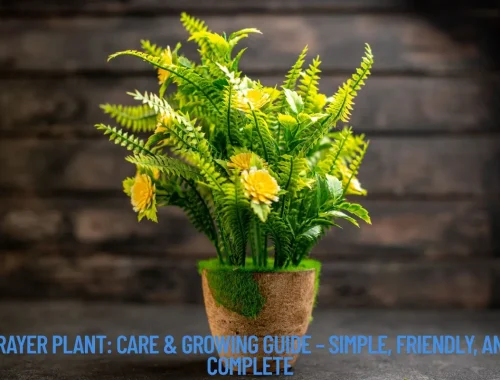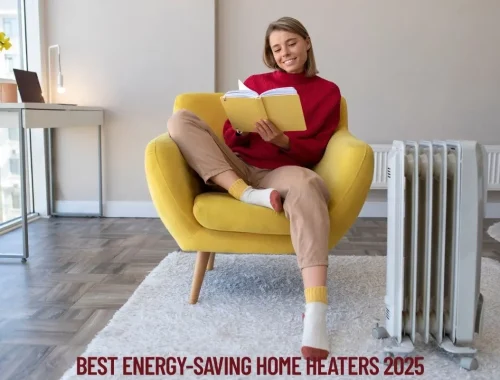
Elevated Indoor Planters: The Secret to Stylish Plant Displays
I’ll never forget the first time I saw a fiddle leaf fig in a sleek, mid-century planter on legs. My friend’s apartment went from “nice” to designer-worthy with just that one piece. It wasn’t just a plant—it was living decor that made the whole room feel curated.
If you’re looking to elevate your plants (literally!), indoor planters on legs are the secret weapon you need.
In this guide, you’ll discover:
✔ Why planters on legs work (it’s not just about looks!)
✔ Best styles for every home (mid-century, boho, modern & more)
✔ What plants thrive in them (+ which to avoid)
✔ Pro tips from interior designers & plant experts
Let’s dig in!
Table of Contents
Toggle1. Why Choose a Planter on Legs?
A. They Make Small Spaces Feel Bigger
As design experts note:
“Elevated planters create airflow underneath, tricking the eye into seeing more floor space.”
Personal tip: My studio apartment felt 10x bigger when I swapped floor plants for leggy planters.
B. Better for Your Plants
-
Prevents overwatering (no soggy bottoms!)
-
Improves air circulation to roots (Journal of Horticultural Science, 2021)
C. Instant Style Upgrade
From minimalist metal to rustic wood, the legs add personality before the plant even grows in!
2. Best Planter-on-Legs Styles
A. Mid-Century Modern (Tapered Wood Legs)
-
Perfect for: Fiddle leaf figs, monsteras
-
Try: White pot + walnut legs
B. Boho Rattan (Woven Basket on Legs)
-
Perfect for: Ferns, pothos
-
Pro tip: Use a liner to prevent water damage
C. Industrial Metal (Iron Hairpin Legs)
-
Perfect for: Snake plants, succulents
-
Bonus: Super sturdy for heavy plants
(See our comparison table below!)
| Style | Best Material | Ideal Plants |
|---|---|---|
| Mid-Century | Ceramic + Wood | Fiddle leaf, Monstera |
| Boho | Rattan | Ferns, Pothos |
| Industrial | Metal | Snake Plant, ZZ |
3. What to Plant (And What to Avoid)
Best Plants for Elevated Planters
✅ Fiddle leaf figs (loves the airflow)
✅ Pothos & philodendrons (trails beautifully)
✅ Succulents (needs the drainage)
Avoid These
❌ Heavy top-growers (like palms—can tip over)
❌ Water-loving plants (like peace lilies—dries too fast)
Pro Tip: My neighbor’s leggy dracaena almost toppled her planter—now she uses sand in the base for weight!
4. Where to Place Them
A. By Sunny Windows
-
Ideal for: Light-loving plants
-
Style hack: Angle legs to create “floating” shadows
B. In Dark Corners
-
Ideal for: Low-light plants (like snake plants)
-
Design trick: Use a bright pot to brighten the space
C. As Room Dividers
-
Group 3+ planters to define spaces in studios
5. DIY vs. Buying: Cost Breakdown
Store-Bought ($$-$$$)
-
IKEA (40−40−100) – Simple styles
-
CB2 (150−150−300) – Designer looks
DIY Hack ($-$$)
-
Thrift a stool + add a bowl on top (my $15 “planter” got compliments for years!)
6. Pro Tips from Designers
-
Match leg finishes to hardware (e.g., gold legs with gold cabinet pulls)
-
Use felt pads to prevent floor scratches
-
Rotate plants weekly for even growth
As one designer advises:
“A planter on legs should complement your furniture—not clash with it.”
7. FAQs
Q: Do they tip over easily?
A: Wider bases = more stable. For tall plants, add rocks/sand to the bottom.
Q: How often to water?
A: Check soil 1x/week—elevated planters dry faster!
Q: Can I use them outdoors?
A: Only if labeled “weatherproof” (most are indoor-only).
8. Final Verdict: Are They Worth It?
✅ YES if: You want style + function and have pets/kids (keeps plants out of reach!).
❌ NO if: You prefer low-maintenance floor plants.
Pro Tip: Start with one statement planter before committing to a set!
You May Also Like

The Hidden Upgrade That Turns Unused Outdoor Space into Luxury Living
August 26, 2025
Prayer Plant: Care & Growing Guide – Simple, Friendly, and Complete
July 29, 2025

